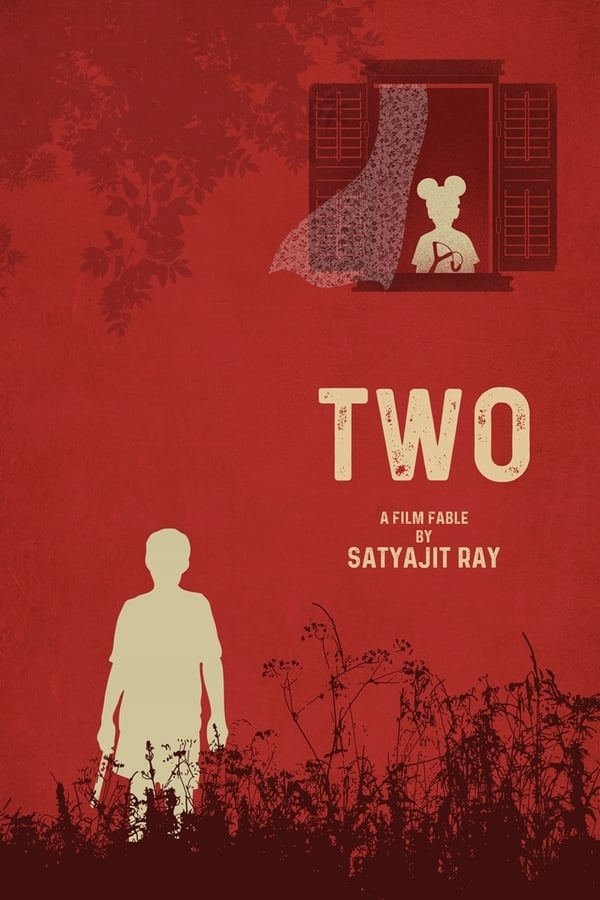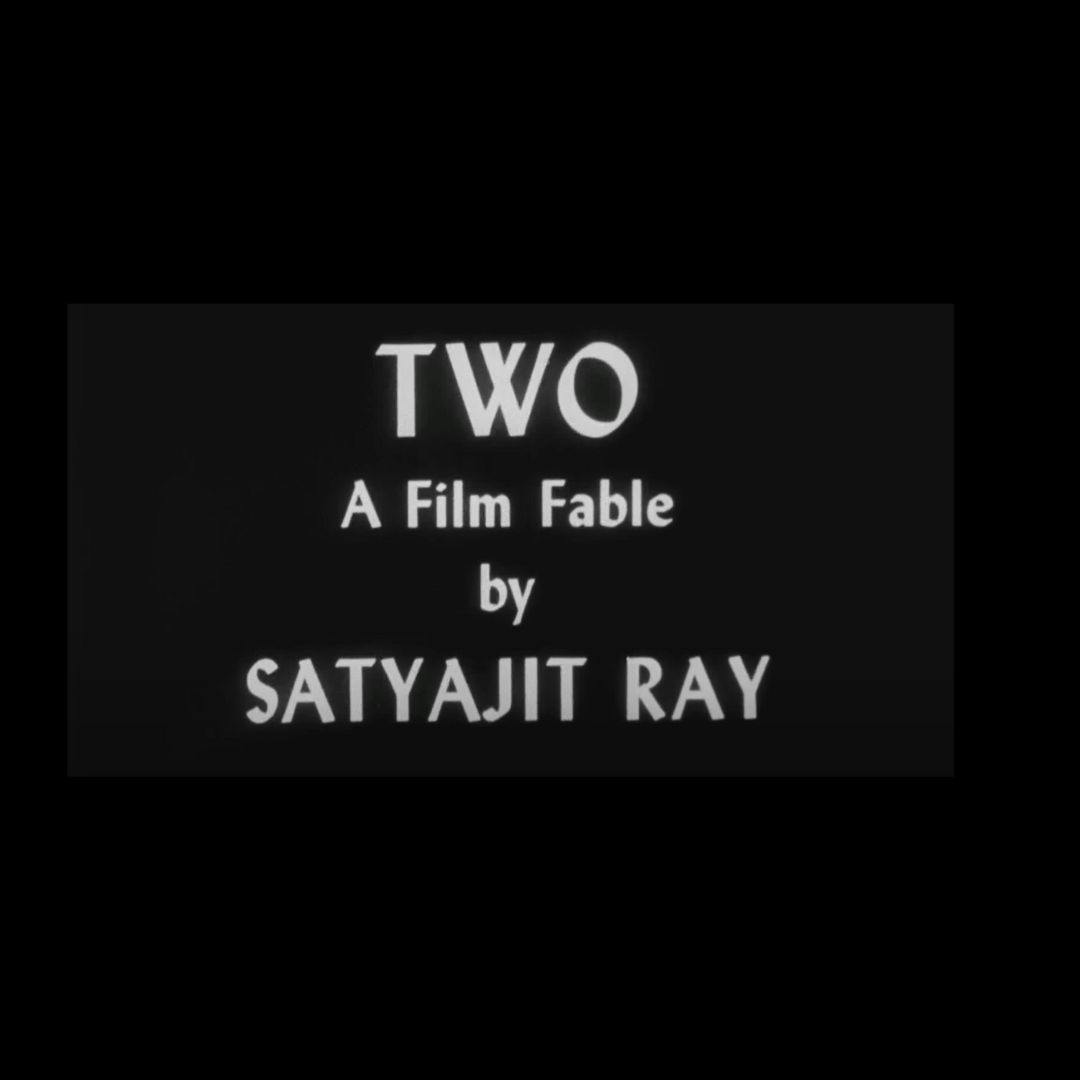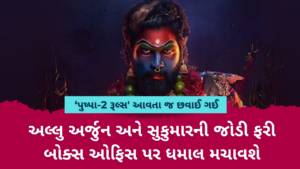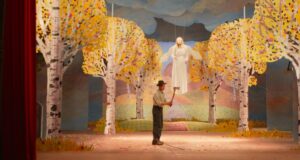Satyajit Ray, in 1964 was requested to make an English-language film in a Bengali setting, by the American non-profit government-funded television programming distributor ‘Public Broadcasting Service’ (PBS); an idea that did not sit quite right with Ray, leading to him doing away with the spoken word and resulting in ‘Two’, a 12-minute black-and-white film that is an account of a child-like rivalry between two young boys trying to one-up each other, against the allegorical allusion to socio-economic disparities, the Vietnam war and the bittersweet facets of friendship and rivalry.
The film begins on a lonely, lazy afternoon, with a young boy lazing around his empty mansion, sipping a cola and seeing a vehicle from his balcony. The young boy, dressed rather affluently for the period the film is based in, seemingly lazes around his house, bursting balloons with matchsticks and wandering aimlessly. He happens to chance upon a flute melody, only to discover another boy, living in the slums just beneath his mansion, playing the flute. Observing the slum boy play outside his window, the child from an affluent family endeavors to assert his own realm of joy. Each time they showcase their respective toy collections, the wealthy child consistently outshines the slum boy with a more elaborate array of options. Whether it’s trumpets drowning out a modest flute, a cowboy ensemble with a gun overshadowing a homemade mask and a spear, or even shooting down the simple kite the slum boy attempts to fly, the affluent child emerges victorious. With a sense of pride in his conquest, the rich kid returns to his opulent room filled with an abundance of toys and entertainment.
The camera transitions from the rich child’s face to the window bars, reminiscent of prison cells, and then shifts outside to the expansive sky, a symbol of freedom that eludes the slum child. The poignant flute melody persists in the background as the rich child sits pensively, now facing away from the window, encapsulated in his opulent confinement, as the short film ends on a rather ironic note, as the rich child’s you robot strides toward the toy tower meticulously constructed by the child, effortlessly crushing it with a single stomp. This serves as a symbolic commentary on how civilization, often the architect of its own progress, can also be the harbinger of its demise.
This film has, at its core, a multitude of segments deep-rooted within it, as Ray skillfully uses imagery, symbolism, metaphors and allegories to portray a rather surreal depiction of socio-economic disparities, the happiness factor, an allusion to the Vietnam War as well as the banes of materialism.
This 12-minute silent narrative is straightforward, portraying a seemingly playful rivalry between two children that, upon closer inspection, reveals more profound underlying themes of loneliness amid wealthy possessions inequality and helplessness when faced with adversities, mankind’s thirst for power in conjunction with a gratification of sadistic pursuits (man is his biggest enemy and competition). It becomes an exploration of how the influences of consumerism and capitalism permeate the lives of ordinary individuals, regardless of their economic status, eroding the innocence of childhood.
Beyond the surface, the apparent childlike competition serves as a lens through which broader societal implications can be examined.
Alienation, Isolation
Two young boys, seemingly cut off from the rest of the world as they dwell in their respective abodes that also highlight their class disparities, try to form a connection with one another, which however fails and turns into a child-like rivalry. The rich and affluent child, despite an abundance of toys and a plethora of entertainment choices, still experiences a sense of exclusion and loneliness as he feels the constant need to poke fun at the slum child.
Tradition vs Modernity
In their struggle to find their place in society, both characters appear to clash in terms of the means they use to compete. For instance, the child from the slum represents tradition, as he uses simple objects such as the homemade mask, a bow and arrow, a kite and a flute. However, the rich kid, representing modernity, makes use of advanced electronic toys to assert his dominance.
Minimalism
The lack of the use of the spoken word, and complete focus on actions, gestures and expressions makes the film rather appealing as with mere expressions a story with multiple facets within, is portrayed.
Allusions to the Vietnam War?
The film was made at the tie of the Vietnam War, with no explicit depictions of the same, however there are subtle allusions to it as the film is essentially a commentary on class divide and socio-economic struggles that exists in post-colonial India, mirroring global struggles against imperialism during the Vietnam War. The basic idea of traditional Realism, where states tend to one-up each other in the anarchical international system is mirrored by the two young kids trying to do the same, using their objects as a show of power.
The film really does pack a punch in just 12 minutes and without dialogues as, towards the end, both children retreat to their respective abodes, which suggests a continuation of the existing issues between them, mirroring the existing perpetual socio-economic disparities and complexities of society as well as human nature. No amount of material wealth can truly make you happy, in the long run. Reveling in the little joys of life is truly what brings peace and happiness to one.
This film has been restored by the Academy Film Archive, and has been made accessible to all on Youtube!









